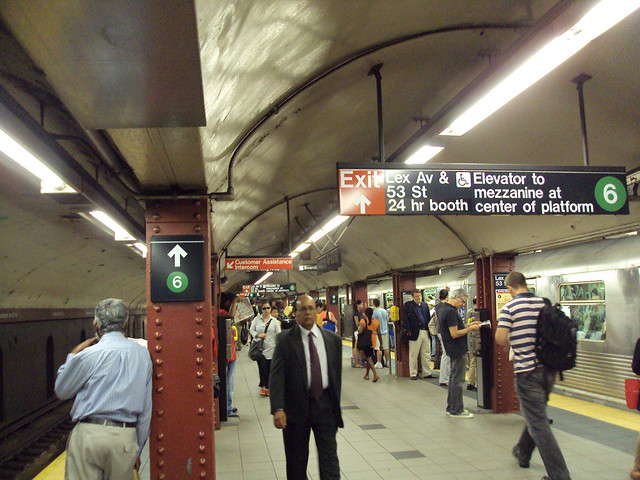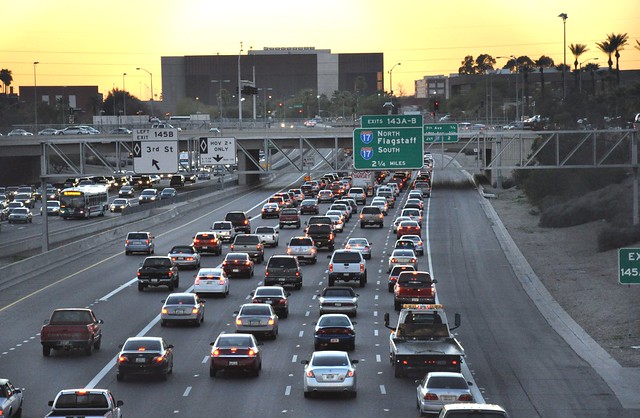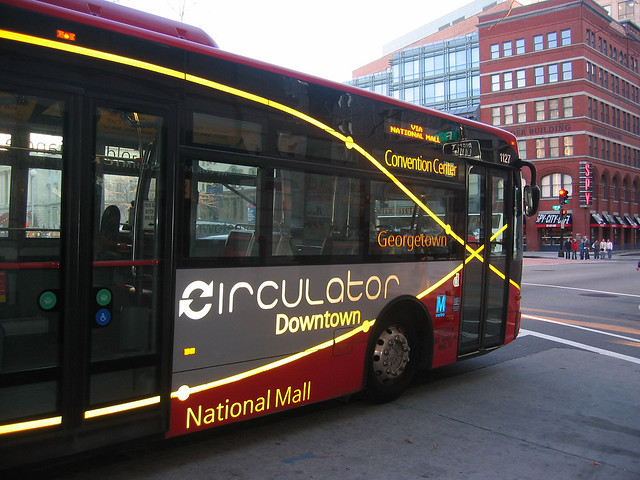Why San Francisco, New York and DC may be more affordable than you thought

Posted August 25, 2014 at 1:29PM
Highly enlightening new data from the New York City-based Citizens Budget Commission demonstrate the immense importance of walkability and transit in shaping how affordable large US cities are for a range of household types. When typical housing and transportation costs are considered together and measured against incomes, cities generally thought to be relatively unaffordable because of high rents – such as San Francisco and New York – actually turn out to be more affordable than sprawling cities because of the high cost of driving in spread-out locations.
For example, San Francisco, Washington, DC and New York City have relatively high housing costs, all ranking in the top seven of 22 large US cities studied by the CBC. But all also rank among the lowest-cost cities for transportation, because of their relative urban density, facilitating walking, and their extensive and heavily used mass transit networks.
The authors explain:
“Because low transportation costs help balance the relatively higher price of housing in New York City, it ranks ninth lowest among the 22 cities in combined housing and transportation costs. Location costs total $20,452 in New York City compared to the lowest costs in Philadelphia ($19,283) and the highest costs in San Jose ($29,337).
“The relatively low transportation costs combine with relatively high incomes to boost New York City’s overall location affordability. New York is the third most affordable city for a typical household, behind Washington, D.C. and San Francisco (See Figure 6.) The location cost burden in New York City is 32 percent for the typical household, well below the 45 percent threshold for combined housing (30 percent) and transportation (15 percent) suggested by HUD as a criterion for affordable housing.”
The least affordable cities when housing and transportation costs are combined and compared to typical household income turn out to be sprawling, Sun Belt cities: Riverside, California; Miami; and Jacksonville. Those three cities also have the study’s highest transportation costs for a typical household, because of high rates of driving and relatively low use of mass transit.
The 45 percent threshold for combined housing and transportation affordability was developed by the federal Department of Housing and Urban Development as part of its Location Affordability Index. The database and criteria (which, I am proud to say, were developed under the leadership of my NRDC colleague Shelley Poticha when she was HUD’s sustainability director) build upon the spectacular Housing + Transportation Affordability Index created and maintained over the years by the Chicago-based Center for Neighborhood Technology.
The CBC findings on city affordability become considerably richer when analyzed for a range of different income levels and types of households. In particular, the Commission looked at seven household types, including three low-income (family, single worker, and very low-income single worker) categories and four moderate- and middle-income categories (“regional moderate,” retirees, dual-income family, and single professional).
The most striking finding is that, for the three low-income household types, cities were generally unaffordable, the study average above the 45 percent threshold. Alarmingly, for very low-income single workers earning wages at the poverty line, every city studied showed combined housing and transportation costs near or above 100 percent of typical incomes.
Still, in all categories there was considerable variation among the cities. For the important category of low-income families, San Francisco and Washington both came in with typical housing and transportation costs (just) below 45 percent of typical incomes, at 42 and 43 percent, respectively. All other cities were above the affordability threshold, with San Antonio the most expensive at 71 percent of typical income. In general, the relatively better-performing cities were the ones with the most density and best networks of transportation options.
For all four categories of moderate- and middle-income households, Washington ranked most affordable of the cities studied. Other relatively good performers across all four groups were, you guessed it, Philadelphia and San Francisco; Seattle and New York also did particularly well. Riverside came in last in all four categories. For the details, go here.
It is interesting to note that some cities with high rents, where controversies about affordability dominate social and political agendas, are actually good performers when compared to the nation at large. Robert Samuels, writing in The Washington Post, calls the conclusions “jaw-dropping” and elaborates:
“The researchers were surprised to find that cities debating the issue of affordability, such as the District and San Francisco, fared so well, according to Charles Brecher, consulting research director for the group.
“Still, Brecher was quick to point out that being the most affordable place to live is not the same as actually being an affordable place to live . . . Even the cities at the top of the list for affordability came extremely close to being unaffordable to poor residents.”
That’s a very fair point.
(Curiously, Samuels’s online article is not the same as the article in the Post’s print edition, at least not as of this writing. The longer quote above comes from the print edition.)
What is inescapable from a fair reading of the complex findings is that whether a city is sprawling or walkable and whether it does or does not have a well-used public transportation system make a huge difference in its affordability to all residents. While the precise results vary from one part of the study to another, in all parts the cities that had relatively dense cores and good transportation options generally fared better than those that did not, in some cases despite having decidedly higher costs for housing when separated from transportation.
The clear implication is that cities should do all they can to link low- and moderate-income households with their best transportation assets. Some cities are much farther along this path than others. Those that lag should particularly be working on transit-oriented and pedestrian-oriented development for all income levels.
Move your cursor over the images for credit information.
Kaid Benfield writes about community, development, and the environment on Switchboard and in other national media. Kaid’s latest book is People Habitat: 25 Ways to Think About Greener, Healthier Cities.
Related posts:
- What the latest housing data mean for the environment (August 1, 2014)
- The thorny matter of gentrification (March 14, 2014)
- The top 10 US cities for public transportation (January 28, 2014)
- We need more driving-optional neighborhoods (excerpted from People Habitat) (November 18, 2013)
- When affordable housing isn't, really (March 1, 2013)


